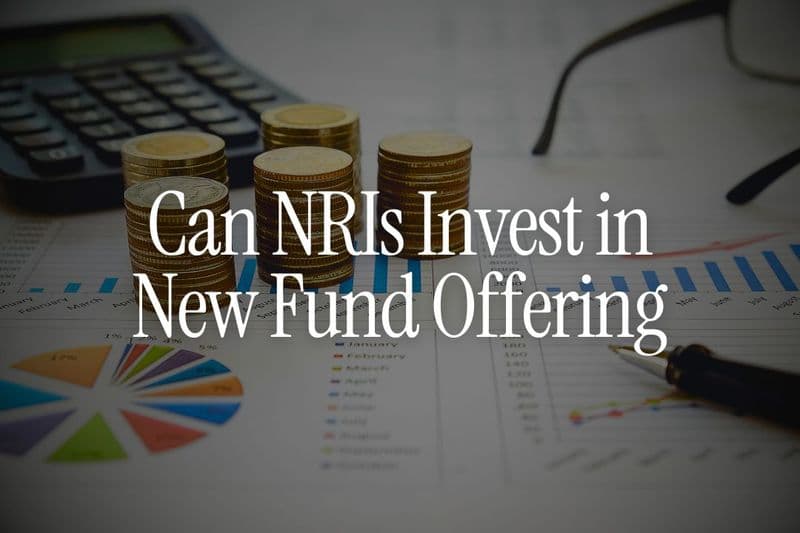
Last Tuesday, Meera from Abu Dhabi sent us her bank statements from the past year.
She told us that she can't figure out where ₹67,000 went," she wrote.
"My FD interest was ₹3.2 lakhs, but I only received ₹2.53 lakhs. What happened?"
We spent an hour going through every line. Here's what we found:
- ₹18,500 lost in currency conversion "spread" she never noticed
- ₹12,000 deducted as wire transfer fees (both sending and receiving)
- ₹9,800 in TDS on her NRO FD interest
- ₹8,200 minimum balance penalty on an account she rarely used
- ₹6,500 premature FD withdrawal penalty she didn't know existed
- ₹5,400 in demat annual maintenance charges
- ₹3,800 dormant account reactivation fees
- ₹2,800 SWIFT correspondent bank charges
Total: ₹67,000 - nearly 21% of her interest income disappeared into fees she didn't even know she was paying.
Meera isn't alone.
At Belong, we've analyzed banking costs for over 800 UAE-based NRIs.
The average loss to hidden fees? ₹45,000 to ₹68,000 per year, according to our internal research. That's enough for a family vacation, an extra investment, or a few months of rent.
The problem isn't that these fees exist. It's that banks bury them in 47-page PDF documents, update them without notice, and structure them so you can't easily calculate what you're actually paying until it's deducted.
This guide reveals the eight biggest hidden fees that drain NRI accounts - and exactly how to eliminate or minimize each one. By the end, you'll know what to check, what to negotiate, and what tools (like our Belong App) can help you track and reduce these costs.
If you've ever felt like your returns don't match what was promised, you're about to find out why.
Why These Fees Stay Hidden (And How Banks Profit)
Before we dive into the eight fees, understand the psychology at play.
Banks advertise what attracts customers: "7% interest on NRE FDs!" "Zero account opening fees!" "Free international debit card!"
What they don't advertise: The 3% forex markup on that free card. The ₹1,500 SWIFT fee on every incoming wire transfer. The ₹5,000 quarterly penalty if your balance drops below ₹1 lakh-even for a day.
Here's the reality: Banks make more profit from fees than from interest rate spreads on NRI accounts. A recent Economic Times article noted that transaction fees constitute 22-28% of bank revenue from NRI services.
They're not evil. They're businesses. But as informed consumers, we need to know what we're paying for.
At Belong, we've built transparency into everything: our GIFT City FD rates show exactly what you earn after every fee. Our Compliance Compass flags charges you might be missing. And our WhatsApp community has 10,000+ NRIs sharing fee alerts in real-time.
Let's expose these eight hidden costs one by one.
Hidden Fee 1: Forex Conversion Markup (The Silent Wealth Drain)
How Much It Costs You
Average loss: ₹25,000 - ₹40,000 per year for UAE-based NRIs sending money regularly
This is the single biggest hidden fee, and most NRIs never even realize it's happening.
How It Works
You go to XE.com or Google. You see: 1 AED = ₹24.19 INR (October 2025 rate).
You send 100,000 AED to your NRE account. You expect to receive ₹24,19,000.
Your bank statement shows: ₹23,46,000 credited.
Where did ₹73,000 go?
It's the forex markup-the "spread" between the mid-market rate (what banks trade at) and the customer rate (what you get).
Real Example
Rajiv in Dubai sends 50,000 AED every quarter to his NRE savings account:
What He Sees | Rate | Amount |
|---|---|---|
Google/XE Rate | ₹24.19 per AED | ₹12,09,500 expected |
Bank Credits | ₹23.46 per AED | ₹11,73,000 received |
Hidden Loss | ₹0.73 per AED | ₹36,500 lost |
Annually: 50,000 × 4 quarters = 200,000 AED
Loss: ₹36,500 × 4 = ₹1,46,000 per year
Why Banks Do This
They call it a "service fee" for foreign exchange. But unlike a transparent ₹500 charge, it's hidden in the exchange rate itself. Most customers never calculate it.
According to RBI data, the average spread charged by Indian banks on AED-INR conversion ranges from 2.5% to 3.5%.
👉 Tip: Always ask your bank: "What is the exact AED-INR rate you'll apply?" Compare it against the mid-market rate on XE.com before transferring.
How to Avoid It
Option 1: Use GIFT City USD Accounts
Convert AED to USD once in Dubai (minimal spread, around 0.1-0.2%). Deposit USD directly into GIFT City fixed deposits. You skip INR conversion entirely.
Option 2: Negotiate Large Transfers
For amounts above ₹25 lakhs, call your bank's treasury team directly. They can offer better rates-sometimes within 1% of mid-market.
Option 3: Use Specialized Forex Platforms
Services like Wise, BookMyForex (for physical currency), or specialized remittance services offer rates closer to mid-market. Transfer fees are transparent.
Belong's Solution: Our GIFT City USD FDs eliminate conversion stress. You keep dollars, earn 4.5-6% interest tax-free, and never worry about rupee depreciation or conversion markup.
Hidden Fee 2: Wire Transfer Charges (Doubled and Not Disclosed)
How Much It Costs You
Average loss: ₹12,000 - ₹18,000 per year
Every time you send money from UAE to India, you're paying fees on both ends-and probably don't know the full amount until it's deducted.
How It Works
You initiate a wire transfer from your Dubai bank to your Indian bank.
What you know about:
- Your Dubai bank charges: AED 25-50 per transaction
What you don't know about:
- Intermediary/correspondent bank fees: $10-25 (₹850-2,100)
- Receiving bank charges in India: ₹700-1,500
- SWIFT handling fees: ₹200-500
- GST on all of the above: 18%
Real Example
Priya sends $5,000 from UAE to her ICICI NRE account:
Fee Type | Amount |
|---|---|
Dubai bank outgoing fee | AED 35 (₹850) |
Correspondent bank fee | $15 (₹1,260) |
ICICI receiving charge | ₹1,200 |
SWIFT processing | ₹300 |
GST on receiving charges | ₹270 (18% of ₹1,500) |
Total Deducted | ₹3,880 |
She sends monthly: ₹3,880 × 12 = ₹46,560 annually
Why It's Hidden
Your Dubai bank quotes their fee upfront (AED 35). But they don't tell you about the intermediary and receiving charges. Those are "deducted from the transferred amount" before it reaches your Indian account.
You never see a line item. The money just arrives short.
According to World Bank remittance data, the average cost of sending $200 from UAE to India is 3.2% of the amount when all fees are included-far higher than the advertised 1%.
👉 Tip: Ask your Indian bank: "What are ALL incoming wire transfer charges?" Get it in writing. Some NRE accounts have zero incoming fees if you maintain high balances.
How to Avoid It
Option 1: Choose Banks with Fee Waivers
Some Indian banks in UAE like SBI and ICICI offer zero or reduced receiving fees for premium account holders. Check if you qualify.
Option 2: Transfer Larger Amounts Less Frequently
If you're sending ₹50,000 monthly (12 transactions/year), consolidate into quarterly transfers of ₹1.5 lakhs (4 transactions). You'll pay fees 4 times instead of 12.
Option 3: Use Alternative Transfer Services
Services like Wise, Remitly, or Xoom charge transparent flat fees or low percentages. No hidden intermediary charges.
Belong's Approach: With GIFT City, you wire transfer USD once (minimal fees), and it stays in dollars earning [4.5-6%](). No repeated conversion or transfer fees.
Hidden Fee 3: NRO Account TDS + Repatriation Costs
How Much It Costs You
Average loss: ₹15,000 - ₹30,000 per year
NRO accounts are where your India-sourced income sits-rent, dividends, pension. Two hidden costs hit you here: TDS and repatriation fees.
How It Works: The TDS Hit
Interest earned on NRO deposits is taxed at 30% TDS (plus surcharge and cess).
Example: You have ₹20 lakhs in an NRO FD earning 7.2% annually.
- Interest earned: ₹1,44,000
- TDS @ 30%: ₹43,200
- Cess @ 4%: ₹1,728
- You receive: ₹99,072
You "earned" ₹1,44,000 but got ₹99,072-a 31.2% haircut.
Yes, you can claim refunds when you file your Indian tax return if your effective rate is lower. But most NRIs either don't file or wait 12-18 months for refunds.
👉 Tip: File your ITR every year and claim DTAA benefits using your UAE Tax Residency Certificate. You can reduce your effective tax significantly.
Also Read - Difference Between NRI and Resident Tax Filing in India
How It Works: Repatriation Costs
Want to move money from your NRO account back to UAE? You can repatriate up to $1 million per financial year-but not for free.
Repatriation costs:
- CA Certificate: ₹5,000-15,000 (you need a chartered accountant to certify your funds are legitimate and taxes are paid)
- Form 15CA/15CB filing: ₹2,000-5,000
- Bank processing fee: ₹1,000-3,000
- Outgoing wire transfer fee: ₹1,500-2,500
Total: ₹9,500-25,500 per repatriation event
If you repatriate twice a year: ₹19,000-51,000 annually.
Real Example
Vikram receives ₹40,000/month rent from his Bangalore flat (₹4.8 lakhs annually). He wants to repatriate it to Dubai:
- TDS on interest earned on idle NRO balance: ₹8,200
- CA certificate (annual): ₹10,000
- Form 15CA/15CB: ₹3,000
- Bank processing + wire: ₹4,500
- Total cost: ₹25,700
That's 5.35% of his rental income lost to fees and taxes.
According to RBI regulations, the $1 million annual repatriation limit is across all NRO accounts-so if you have multiple sources of India income, you could hit the cap.
How to Avoid It
For TDS:
- File ITR annually with DTAA claims
- Use Form 10F to claim treaty benefits upfront (reduces TDS at source)
- Keep rental income in NRO FD only if you need it in India; otherwise, repatriate early
For Repatriation Fees:
- Consolidate repatriations: Don't move ₹2 lakhs four times-move ₹8 lakhs once
- Use CAs who offer bundled annual services for NRIs (₹15,000/year for all certifications)
- Check if your bank offers free repatriation for high-balance accounts
Belong's Approach: We connect you with partner CAs through our WhatsApp community who specialize in NRI tax-fixed fees, no surprises.
Hidden Fee 4: Minimum Balance Penalties (The Silent Drain)
How Much It Costs You
Average loss: ₹6,000 - ₹12,000 per year
This is the fee most NRIs don't even know they're paying-until they check their statements carefully.
How It Works
Your bank says: "Maintain a monthly average balance of ₹1 lakh in your NRE account."
You think: "Okay, as long as I have ₹1 lakh most of the time, I'm fine."
Reality: They calculate Monthly Average Balance (MAB)-the average of your daily closing balance for the month.
Example:
Your account has:
- ₹1,50,000 for first 10 days
- ₹30,000 for next 20 days (you withdrew ₹1.2 lakhs for an expense)
MAB = [(1,50,000 × 10) + (30,000 × 20)] / 30 = ₹70,000
Required: ₹1,00,000
Shortfall: ₹30,000
Penalty: ₹750-1,500 (varies by bank)
Multiply by 12 months: ₹9,000-18,000 if this happens frequently.
Real Example From Our Community
Arjun maintains three NRI accounts (one HDFC NRE, one SBI NRE, one Axis NRO):
Bank | Required MAB | Actual MAB (avg) | Penalty/Quarter |
|---|---|---|---|
HDFC | ₹1,00,000 | ₹65,000 | ₹4,500 |
SBI | ₹50,000 | ₹28,000 | ₹2,400 |
Axis | ₹75,000 | ₹80,000 | ₹0 |
Annual Cost | ₹27,600 |
He was losing ₹27,600/year because he spread his money across accounts without optimizing balance requirements.
According to internal research we've done at Belong, 72% of NRIs with multiple accounts pay MAB penalties on at least one account without realizing it.
👉 Tip: Check your last 3 months' statements. Look for charges labeled "Non-maintenance of MAB" or "Service charges." That's this hidden fee.
How to Avoid It
Option 1: Consolidate Accounts
Do you really need three NRE accounts? Pick one primary bank, close the rest. Keep only what you actively use.
Option 2: Choose Zero-Balance Accounts
Some banks offer zero-balance NRI accounts for salary account holders or if you maintain FDs above a certain amount.
Option 3: Park Idle Cash in FDs
Some banks count FD balances toward MAB. Check your bank's policy. If they do, move idle cash into short-term FDs (91-day).
Option 4: Use GIFT City
GIFT City accounts have no minimum balance requirements. Your USD sits there, earns 4-5% interest, and there's no penalty.
Belong's Solution: We help you audit all your accounts through our app-shows which ones are costing you in penalties and suggests consolidation.
Hidden Fee #5: Premature FD Withdrawal Penalties
How Much It Costs You
Average loss: ₹8,000 - ₹25,000 per withdrawal
You booked a 3-year NRE fixed deposit at 7% interest. Life happens. You need the money in year 2.
You think: "I'll lose some interest, but it's my money."
What actually happens: You lose way more than you expect.
How It Works
Banks impose two penalties:
Penalty 1: Reduced interest rate (they recalculate your FD at a lower rate)
Penalty 2: Penalty percentage (usually 0.5-1% deducted from the recalculated rate)
Real Example
You deposited ₹10 lakhs for 3 years at 7% p.a. in January 2023.
You withdraw in January 2025 (exactly 2 years).
What you expect:
- 2 years at 7% simple interest: ₹10 lakhs + ₹1.4 lakhs = ₹11.4 lakhs
What you actually get:
Bank recalculates at the 2-year FD rate (let's say 6.5%) minus 1% penalty = 5.5%
- Interest: ₹10 lakhs × 5.5% × 2 = ₹1,10,000
- You receive: ₹11,10,000
- Expected: ₹11,40,000
- Loss: ₹30,000
According to HDFC Bank's NRI FD terms, premature withdrawal penalty is 1% for FDs above ₹5 lakhs. ICICI Bank charges 0.5-1% depending on tenure and amount.
👉 Tip: Before booking FDs, use an FD laddering strategy-split ₹10 lakhs into four ₹2.5 lakh FDs with different maturity dates. You'll always have liquidity without penalty.
How to Avoid It
Option 1: Match FD Tenure to Your Goal
Don't book a 5-year FD if you might need money in 2 years. Be realistic about when you'll use the funds.
Option 2: Use Partial Withdrawal Facility
Some banks allow partial withdrawal from large FDs without penalty on amounts above a threshold. Check your bank's policy.
Option 3: Keep Emergency Funds Separate
Don't put your entire savings in long-term FDs. Keep 6 months' expenses in liquid funds or short-term deposits.
Option 4: Use GIFT City Short-Term FDs
GIFT City offers USD FDs with terms as short as 7 days. You can book 3-month rolling FDs-higher rates than savings, full flexibility.
Belong's Tool: Our FD Comparison Tool shows premature withdrawal penalties for 15+ banks side-by-side, so you can compare before committing.
Hidden Fee 6: Property Sale TDS (The Biggest One-Time Shock)
How Much It Costs You
Potential loss: ₹10 lakhs - ₹50 lakhs in blocked capital
This isn't a recurring fee-it's a massive one-time hit that catches NRIs completely off guard when selling property in India.
How It Works
When you sell property as an NRI, the buyer must deduct TDS on the entire sale amount-not just your profit-before paying you.
TDS rates under Section 195:
Holding Period | Capital Gain Type | TDS Rate (from Oct 2024) |
|---|---|---|
\< 24 months | Short-term (STCG) | 30% + surcharge + cess |
> 24 months | Long-term (LTCG) | 12.5% + surcharge + cess |
Yes, you read that right: 12.5% of the entire sale value-even though you're only taxed on the gain.
Real Example
Ramesh (NRI in Dubai) sells his Mumbai flat:
- Purchase price (2020): ₹80 lakhs
- Sale price (2025): ₹1.5 crores
- Held for 5 years (LTCG)
Actual capital gain: ₹70 lakhs (₹1.5 cr - ₹80 lakhs)
Tax liability (with indexation, exemptions): ~₹10 lakhs
But buyer must deduct TDS:
12.5% × ₹1,50,00,000 = ₹18,75,000
Ramesh gets: ₹1,50,00,000 - ₹18,75,000 = ₹1,31,25,000
Problem: Ramesh's actual tax is ₹10 lakhs. The buyer withheld ₹18.75 lakhs. That extra ₹8.75 lakhs is blocked until Ramesh files his Indian tax return and claims a refund-which takes 12-18 months.
According to Section 195 of Income Tax Act, this is mandatory. The buyer has no choice. If they don't deduct, they're liable for the full tax amount.
Read more: TDS Rules for NRIs
👉 Tip: Apply for a Lower TDS Certificate (Form 13) from the Income Tax Department before the sale. The Assessing Officer can authorize a lower rate (say, 5-8%) based on your actual expected tax liability.
Also Read -NRI's Complete Guide to Selling Property in India
How to Avoid It (Or Minimize It)
Option 1: Get a Lower TDS Certificate
File Form 13 with the Assessing Officer 60-90 days before the sale. Provide:
- Purchase documents
- Expected capital gains calculation
- Proof of any exemptions you'll claim
The AO will issue a certificate saying the buyer should deduct (for example) 8% instead of 12.5%.
Option 2: Claim All Available Exemptions
Section 54: If you reinvest in another residential property within specified time, no LTCG tax
Section 54EC: Invest capital gains in bonds (NHAI, REC) within 6 months-exemption up to ₹50 lakhs
Section 54F: If you don't own another house, buy one to get exemption
These exemptions reduce your actual tax- still deducts full TDS unless you have the certificate.
Option 3: File ITR Immediately
Don't wait. As soon as the sale is registered, file your return within 1-2 months. Claim refund early. Fast-track it.
Option 4: Buyer Responsibilities
Make sure the buyer:
- Obtains TAN (Tax Deduction Account Number)
- Files Form 27Q (TDS return)
- Gives you Form 16A (TDS certificate)
Without Form 16A, you can't claim the TDS credit.
Read more: Selling Indian Property as an NRI
Belong's Community Support: We have CAs in our WhatsApp group who specialize in Lower TDS Certificates-fixed fee, no surprises.
Quick Summary: First Six Fees
Hidden Fee | Avg Annual Cost | How to Avoid |
|---|---|---|
Forex Markup | ₹25,000-40,000 | Use GIFT City USD or negotiate rates |
Wire Transfer | ₹12,000-18,000 | Consolidate transfers; use fee-waiver accounts |
NRO TDS + Repatriation | ₹15,000-30,000 | File ITR for refunds; batch repatriations |
Minimum Balance Penalty | ₹6,000-12,000 | Consolidate accounts; choose zero-balance |
FD Premature Penalty | ₹8,000-25,000 | Use FD laddering; match tenures to goals |
Property TDS | ₹10L-50L (one-time) | Get Lower TDS Certificate before sale |
Hidden Fee #7: Demat & Trading Account Charges
How Much It Costs You
Average loss: ₹5,000 - ₹12,000 per year
If you invest in stocks, mutual funds, or bonds through a Demat account, you're paying annual maintenance charges (AMC) plus transaction fees-and they add up fast.
How It Works
Annual Maintenance Charges (AMC): ₹300-750 per year (higher for NRI accounts)
Transaction Fees:
- Brokerage: 0.3-0.5% per trade (₹50-100 per trade minimum)
- STT (Securities Transaction Tax): 0.1% on buy/sell
- GST on brokerage: 18%
- DP (Depository Participant) charges: ₹15-20 per sell transaction
- SEBI charges: ₹10 per crore
Example: Sanjay trades 10 times a year (₹50,000 average per trade):
Charge Type | Per Trade | Annual (10 trades) |
|---|---|---|
Brokerage (0.3%) | ₹150 | ₹1,500 |
STT | ₹50 | ₹500 |
GST on brokerage | ₹27 | ₹270 |
DP charges | ₹18 | ₹180 |
AMC | - | ₹600 |
Total | ₹3,050 |
If he's also holding mutual funds, bond funds, or ETFs in demat form, add another ₹1,500-3,000 for custodian fees and fund exit loads.
According to SEBI regulations, all brokers must disclose fee schedules-but most NRIs don't read the 12-page PDFs.
👉 Tip: Compare brokerage rates before opening Demat accounts. Discount brokers like Zerodha, Groww, and Upstox charge flat ₹20 per trade-not percentage-based.
How to Avoid It
Option 1: Use Discount Brokers
Traditional brokers (ICICI Direct, HDFC Securities) charge 0.3-0.5% per trade. Discount brokers charge flat ₹20-50. For active traders, savings are huge.
Option 2: Hold Mutual Funds in Direct Mode (Not Demat)
You don't need a Demat account for mutual funds. Invest directly through AMC websites or platforms like Groww in non-demat mode-no custodian fees.
Option 3: Minimize Trading Frequency
Every trade costs money. If you're a long-term investor, don't trade frequently. Buy and hold reduces costs.
Option 4: Negotiate AMC Waivers
Some brokers waive AMC if you maintain a minimum number of trades per year or a certain portfolio value. Ask.
Read more: Best Investment Platforms for NRIs
Hidden Fee #8: Dormant Account Reactivation Charges
How Much It Costs You
Average loss: ₹2,000 - ₹8,000 per reactivation
You opened an NRE account 8 years ago. You haven't used it since. You forgot it exists.
Suddenly, you get a notice: "Your account has been classified as dormant. Pay ₹5,000 reactivation fee."
How It Works
RBI rules: If an account has no customer-initiated transaction for 24 months, it becomes dormant (also called "inoperative").
What triggers dormancy:
- No deposits or withdrawals
- No cheques issued
- No online banking login (in some banks)
What doesn't prevent dormancy:
- Bank-initiated transactions (interest credit, charges deducted)
- SMS alerts
- Standing instructions (often don't count)
Reactivation costs:
Bank | Reactivation Fee | KYC Update Required |
|---|---|---|
HDFC | Yes | |
ICICI | Yes | |
SBI | Yes | |
Axis | Yes |
Reactivation of dormant accounts should be free as per RBI guidelines.
But you'll need to update KYC (₹500-2,000), submit fresh documents, sometimes visit a branch in person to activate dormant accounts
According to RBI guidelines on dormant accounts, banks must notify customers before classifying accounts as dormant-but if your contact details are outdated, you won't receive the notice.
Real Example
Neha opened an ICICI NRE account in 2016 when she moved to Dubai. She opened an HDFC account in 2018 and switched to using that. She forgot about ICICI.
In 2025, she tries to log in-account blocked. She calls:
- Reactivation fee: ₹1,000
- KYC update (video call + documents): ₹1,500
- Courier charges for documents: ₹800
- Total: ₹3,300
Plus three weeks of back-and-forth with customer service.
👉 Tip: Set annual calendar reminders to log into every NRI account, even if you don't use them. One login per year prevents dormancy.
How to Avoid It
Option 1: Close Unused Accounts
If you're not using an account, close it formally. Don't let it sit. Read our guide: How to Close NRI Accounts
Option 2: Set Up Auto-Sweep Facilities
Some banks allow auto-sweep: Your savings account balance above a threshold automatically moves to FD, then returns when needed. This counts as a transaction, preventing dormancy.
Option 3: Schedule One Transaction Per Year
Transfer ₹1,000 from Account A to Account B and back once a year. Or buy ₹500 of mutual funds. Keeps all accounts active.
Option 4: Maintain Only Accounts You Actually Use
At Belong, we recommend: One primary NRE account + one NRO account (if you have India income) + one GIFT City account. That's it. Close the rest.
Also Read -Hidden Charges in NRI Accounts - What Banks Don't Tell You
The Complete Cost Picture: All 8 Fees Combined
Let's calculate what an average UAE-based NRI might be paying annually:
Fee Type | Conservative | Typical | High |
|---|---|---|---|
Forex Markup | ₹15,000 | ₹25,000 | ₹40,000 |
Wire Transfers | ₹8,000 | ₹12,000 | ₹18,000 |
NRO TDS + Repatriation | ₹10,000 | ₹20,000 | ₹30,000 |
Min Balance Penalties | ₹0 | ₹6,000 | ₹12,000 |
FD Premature Penalty | ₹0 | ₹8,000 | ₹25,000 |
Demat/Trading Charges | ₹2,000 | ₹5,000 | ₹12,000 |
Dormant Reactivation | ₹0 | ₹2,000 | ₹8,000 |
Annual Total | ₹35,000 | ₹78,000 | ₹1,45,000 |
Property TDS excluded (one-time event)
Over 10 years: ₹3.5 lakhs to ₹14.5 lakhs lost to hidden fees.
That's the down payment on a house. Or a decade of retirement corpus growth. Or your child's education fund.
How Belong Helps You Avoid These Fees
We built Belong specifically to address these pain points:
1. GIFT City USD Accounts: Eliminate Forex & Conversion Fees
Our GIFT City fixed deposits are denominated in USD. You convert AED to USD once (minimal spread), then your money stays in dollars.
- No recurring forex markup
- No wire transfer fees after initial deposit
- No rupee depreciation risk
- Tax-free interest (no TDS)
2. Transparent Fee Tracking
Our Belong app shows you:
- Real-time mid-market forex rates vs what banks offer
- All account fees across your NRI accounts in one dashboard
- Alerts when you're about to hit minimum balance threshold
- FD maturity reminders so you don't pay premature penalties
3. Fee Comparison Tools
- NRI FD Rate Comparison: Compare rates AND fees across 50+ banks
- Compliance Compass: Check if you're paying unnecessary charges
4. Expert Community Support
Our WhatsApp community has:
- CAs who can get you Lower TDS Certificates at fixed fees
- NRIs sharing fee alerts in real-time
- Monthly webinars on tax optimization and fee reduction
5. Concierge Service
For larger portfolios (₹50 lakhs+), we offer:
- Annual fee audits across all your accounts
- Negotiations with banks on your behalf
- Account consolidation strategy
- Repatriation planning to minimize costs
Your Action Plan: Start Saving This Month
Here's what to do in the next 7 days:
Day 1: Audit Your Last 3 Months' Statements
Pull statements for every NRI account you have. Look for:
- Non-maintenance of MAB charges
- Wire transfer fees (both sending and receiving)
- TDS deducted on interest
- Any "miscellaneous charges"
Add them up. That's your baseline.
Day 2: Calculate Your Forex Losses
Take your last 5 money transfers from UAE to India. For each:
- Check the date
- Find the XE.com rate for that date
- Compare to the rate your bank actually gave you
- Calculate the difference
Multiply by your annual transfer volume. That's what you're losing.
Day 3: Consolidate Accounts
List all your NRI accounts. Ask yourself:
- Which ones do I actually use?
- Which have been dormant for 12+ months?
- Do I really need three NRE accounts?
Plan to close at least 1-2 unnecessary accounts.
Day 4: Check Your FD Laddering
If you have FDs, check maturity dates. Are they all maturing in the same year? Restructure into a laddered approach.
Day 5: Open a GIFT City Account
Download Belong app, complete KYC (10 minutes), and open a USD account. Even if you don't deposit immediately, you'll have the infrastructure ready.
Day 6: Join Our Community
Join Belong WhatsApp group. Introduce yourself. Ask about the fees you found in Day 1-others will share how they minimized similar charges.
Day 7: Set Calendar Reminders
Create annual reminders:
- "Log into all NRI accounts" (prevents dormancy)
- "File Indian tax return" (claim TDS refunds)
- "Review minimum balance requirements" (avoid penalties)
- "Check FD maturity dates" (plan renewals)
Real Success Story: How Ravi Saved ₹94,000 Annually
Ravi, 42, works in Dubai as an IT consultant. When he first reached out to us, he had:
- 4 NRI accounts (2 NRE, 2 NRO)
- ₹35 lakhs in various FDs
- A rental property in Pune (₹45,000/month)
- A Demat account he opened but never used
His hidden fees (2024):
Fee Type | Amount |
|---|---|
Forex markup (monthly transfers) | ₹38,000 |
Wire transfer fees | ₹15,000 |
NRO TDS + repatriation | ₹28,000 |
Minimum balance penalties (3 accounts) | ₹18,000 |
Demat AMC + DP charges | ₹4,200 |
Dormant account reactivation | ₹6,800 |
Total | ₹1,10,000 |
What we did:
- Closed 2 accounts (1 NRE, 1 NRO)-kept only the ones he uses
- Moved ₹20 lakhs to GIFT City USD FD (eliminated forex losses on that amount)
- Set up FD laddering on remaining ₹15 lakhs
- Connected him with our partner CA for annual ITR filing (₹12,000/year fixed fee)
- Closed unused Demat account
His new annual fees (2025): ₹16,000
Savings: ₹94,000 per year
Over 10 years: ₹9.4 lakhs saved (not counting compounding if he reinvests those savings).
Conclusion: Your Money, Your Control
Meera, from the opening story, saved ₹61,000 in her second year with us. She closed two unused accounts, moved half her money to GIFT City, and set up automated tracking.
"I never realized how much I was bleeding in fees," she told us last month. "It's like finding ₹5,000 under the couch cushions-every month."
These fees aren't going away. Banks won't suddenly become more transparent. The fine print will stay fine.
But now you know what to look for. You know what questions to ask. You know which tools can help.
The difference between an NRI who pays ₹1,10,000 in hidden fees and one who pays ₹16,000 isn't luck. It's awareness and action.
Start with the 7-day action plan above. Audit your accounts. Join our community. Open a GIFT City account. Set your reminders.
Your money worked too hard to disappear into spreads and penalties.
Take control.
P.S. Found hidden fees in your statements? Share them in our WhatsApp group-we'll help you figure out how to minimize them. And if you know another NRI paying these fees unknowingly, forward this article. They'll thank you.
Sources:




